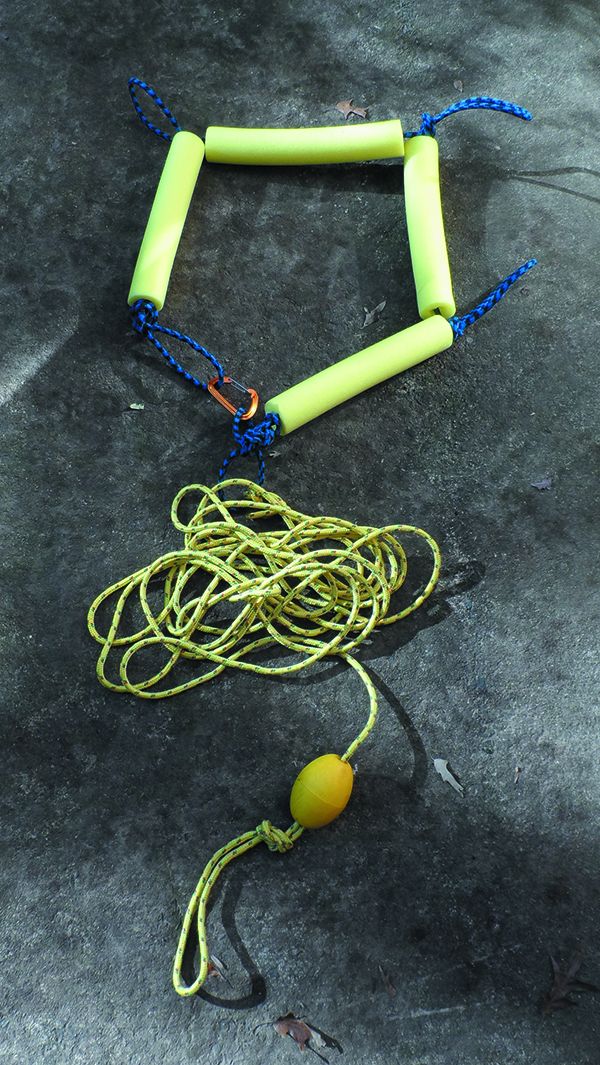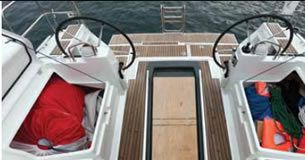Tough less durable than a Lifesling II, the Anshinya can be assembled from inexpensive parts in 15 minutes. (Note of caution: UV rays can cause pool noodles and some floating lines to deteriorate rapidly, so protect from the sun and replace them at regular intervals.)

Materials
- 120 feet of floating waterski line. About $30.
- Aluminum wire-gate climbing carabiner. These are very corrosion resistant, strong (4,500 pounds), and the easiest type to clip with gloves and cold hands. It is this last factor that makes them suitable for most rescue applications. Working a snap-shackle with one hand while struggling to swim in rough, cold water, possibly in the dark, is just not practical. Use whipping twine to secure the carabiner tightly into place so that it can’t slide or fall out. Captive-eye carabiners are available, but avoid stainless versions, which are too hard to open. About $6.
- 2.5-inch diameter pool noodle. We tested both 2.5-inch (about $1) and 3.5-inch jumbo noodles (about $6). We found the 2-inch size is easier to use, although the 3.5-inch noodles provide over twice the flotation. Length ranges from 52-63 inches, the smaller length is enough.

Total cost, with rope, is about $42. Our test version was made from surplus materials on-hand.
Directions
- Cut the noodle into 4 equal pieces of about 12-16 inches (check for fit). Total length is between 52” to 64”
- Starting with 20-foot length of high quality floating line, tie a bowline on a bight on one end. This provides two loops; one for attaching a line, leaving the other free for clipping the carabiner or other recovery device. Leave the end long and tuck it into the first noodle segment.
- Thread the line through one of the noodle pieces, and tie an overhand loop tightly against the piece. The loop should be about 6 inches long; enough to easily insert a gloved hand.
- Repeat three more times. Leave the end long after the last knot and tuck it into the last noodle segment.
- Seize the carabiner to the last loop so it will stay fixed. To don the rescue sling, the swimmer can wrap the Anshinya around himself and clip it to one of the other loops.
- Attach the remaining line (about 100 feet).
Conclusion & Caution
This is not an alternative to USCG and ISO-approved lifesaving equipment. Far from it. But we see it as an alternative for poor fishermen (or sailors), for whom a Lifesling II is too costly. We also believe existing products can learn from and improve upon the design. For example: we liked the ease of entry in rough conditions and increased security, but didn’t particularly like the reduced flotation.







































